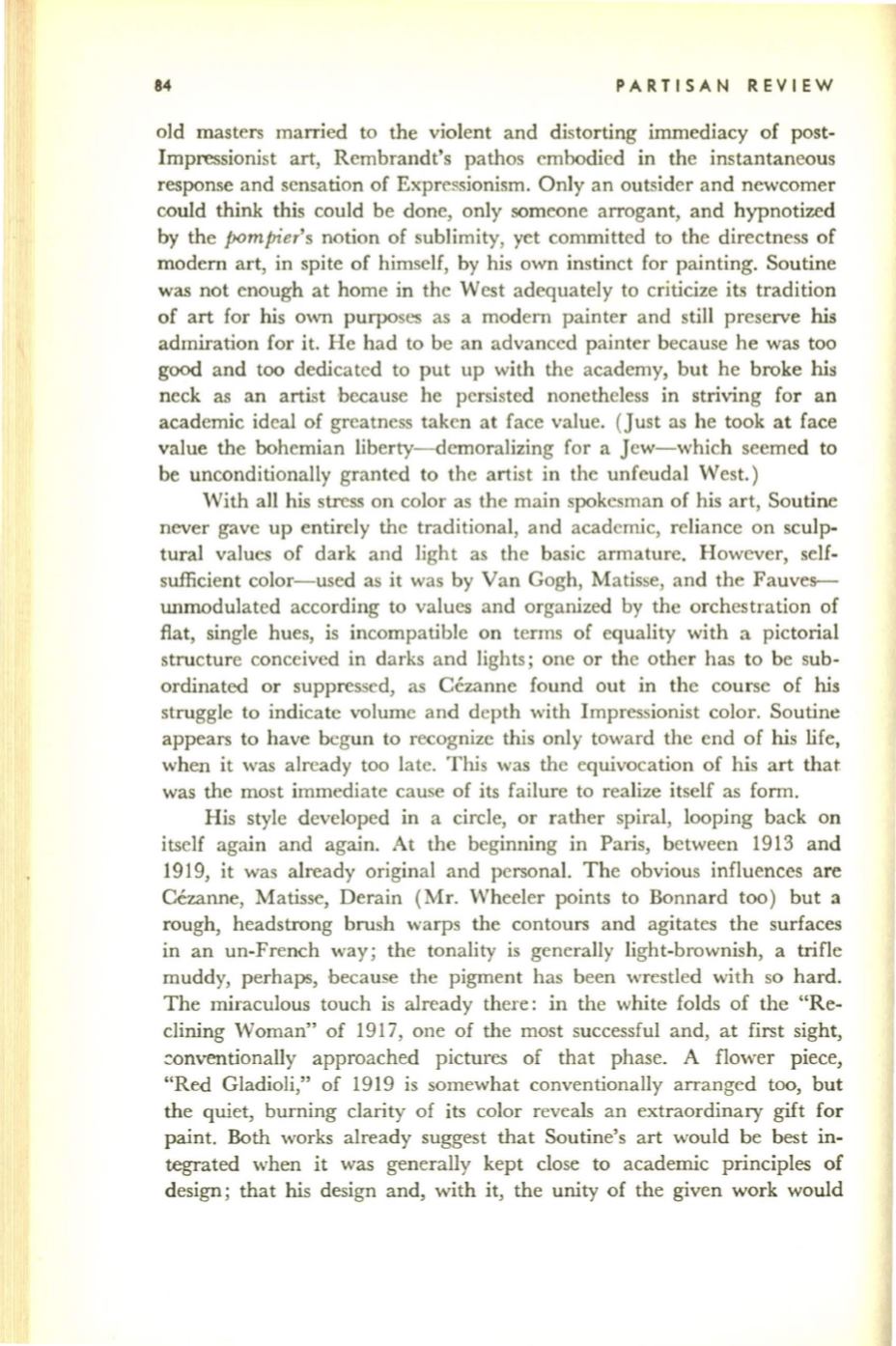
84
PARTISAN REVIEW
old masters married to the violent and distorting immediacy of post–
Impressionist art, Rembrandt's pathos embodied in the instantaneous
response and sensation of Expressionism. Only an outsider and newcomer
could think this could be done, only someone arrogant, and hypnotized
by the
pompier's
notion of sublimity, yet committed to the directness of
modern art, in spite of himself, by his own instinct for painting. Soutine
was not enough at home in the West adequately to criticize its tradition
of art for his own purposes as a modern painter and still preserve his
admiration for it. He had to be an advanced painter because he was too
good and too dedicated to put up with the academy, but he broke his
neck as an artist because he persisted nonetheless in striving for an
academic ideal of greatness taken at face value. (Just as he took at face
value the bohemian liberty-demoralizing for a Jew-which seemed to
be unconditionally granted to the artist in the unfeudal West.)
With all his stress on color as the main spokesman of his art, Soutine
never gave up entirely the traditional, and academic, reliance on sculp–
tural values of dark and light as the basic armature. However, self–
sufficient color-used as it was by Van Gogh, Matisse, and the Fauves–
unmodulated according to values and organized by the orchestration of
fiat, single hues, is incompatible on terms of equality with a pictorial
structure conceived in darks and lights; one or the other has to be sub–
ordinated or suppressed, as Cezanne found out in the course of his
struggle to indicate volume and depth with Impressionist color. Soutine
appears to have begun to recognize this only toward the end of his life,
when it was already too late. This was the equivocation of his art that
was the most immediate cause of its failure to realize itself as form.
His style developed in a circle, or rather spiral, looping back on
itself again and again. At the beginning in Paris, between 1913 and
1919, it was already original and personal. The obvious influences are
cezanne, Matisse, Derain (Mr. Wheeler points to Bonnard too) but a
rough, headstrong brush warps the contours and agitates the surfaces
in an un-French way; the tonality is generally light-brownish, a trifle
muddy, perhaps, because the pigment has been wrestled with so hard.
The miraculous touch is already there: in the white folds of the "Re–
clining Woman" of 1917, one of the most successful and, at first sight,
::onventionally approached pictures of that phase. A flower piece,
"Red Gladioli," of 1919 is somewhat conventionally arranged too, but
the quiet, burning clarity of its color reveals an extraordinary gift for
paint. Both works already suggest that Soutine's art would be best in–
tegrated when it was generally kept close to academic principles of
design; that his design and, with it, the unity of the given work would


